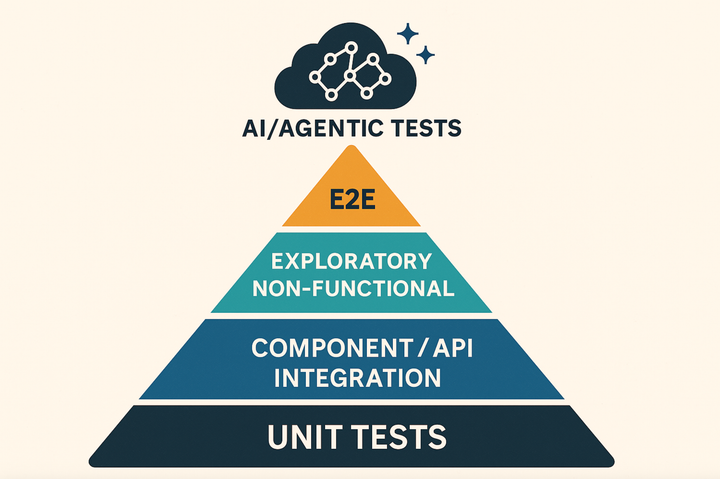The QE Speed Stack Nobody Talks About

When teams talk about test automation, the conversation usually starts (and ends) with frameworks.
“Should we use Playwright or Cypress?”
“Is Java better than Python for testing?”
“Do we need BDD syntax?”
These discussions have their place. But they often miss the bigger picture.
Speed in Quality Engineering doesn’t come from your test runner — it comes from your architecture.
If you want fast, reliable feedback loops that scale with your engineering team, then you need to think beyond test cases. You need to build a system that supports quality at every layer.
That system is what I call the QE Speed Stack — and if even one layer is broken, your automation becomes reactive, brittle, and slow.
Let’s break it down.
🔹 1. Repo Structure: The Foundation
Your test repository is the blueprint your engineers follow. If it’s cluttered, chaotic, or cryptic, you’ve already lost.
Ask yourself:
- Can a new team member clone the repo and understand where the tests live?
- Can they identify shared components vs. test logic?
- Is the folder structure intuitive — or a jungle of legacy experiments and copy-paste debt?
Good repo hygiene pays dividends. It makes onboarding faster, debugging easier, and scaling safer.
Pro Tip: Aim for a clear hierarchy:
tests/
├── dev/
│ └── regression/
├── shared/
│ ├── pages/
│ └── fixtures/
├── data/
Keep test logic separate from page objects and test data. Abstract with intention.
🔹 2. Test Discoverability: Precision Matters
Speed doesn’t always mean faster tests — sometimes, it means less tests.
Can your CI target just the 15 tests related to a specific PR? Or are you running the full suite every time?
If you can’t easily slice your test set by:
- Environment
- Feature
- Jira ticket
- Risk profile
…you’re bottlenecking your entire team.
Test discoverability isn’t just for devs — it’s also crucial for debugging flaky tests, doing impact analysis, and keeping confidence high when moving fast.
Invest in:
- Naming conventions that map to features
- Metadata tagging (e.g.,
@smoke,@awv,@login) - Directory structure that aligns with the product
🔹 3. CI Job Architecture: Stop Firing Cannons
Most CI pipelines are bloated. They run every test, on every commit, in every branch. Then teams wonder why nobody looks at the results.
The modern QE pipeline should be smart:
- Parallelism across test categories or browsers
- Selective triggering based on git diff or tags
- Containerized runs that scale up (or down) on demand
- Caching for dependencies and previous runs
Every unnecessary test execution isn’t just wasted time — it’s noise. And noise erodes trust.
Pro Tip: Create modular workflows in GitHub Actions (or your CI tool of choice) that allow reuse and targeting:
jobs:
playwright:
uses: ./.github/workflows/run-tests.yml
with:
test_path: tests/dev/regression/awv
🔹 4. Test Data Management: Don’t Play Dirty
How many of your tests:
- Rely on stale test accounts?
- Hardcode usernames, dates, or IDs?
- Fail if someone else is using the same record?
This is one of the most overlooked blockers in automation.
A modern test data strategy should include:
- Fixtures that reset with every run
- Dynamic generators for unique, valid data
- Environment-agnostic mocks or seeders
- Data isolation per test or session
If your tests are fighting over shared data, you're not scaling — you’re surviving.
Bonus: Make your test data scripts reusable for dev, QA, and staging environments. Your entire org wins.
🔹 5. Reporting Pipeline: Tell a Better Story
Tests don’t just pass or fail — they tell a story.
Can you trace a failed test back to:
- A specific user story?
- A Jira ticket?
- A recent commit or PR?
If not, you're flying blind.
Your reporting pipeline should give developers, product managers, and stakeholders a shared source of truth — not a janky export from Jenkins.
The best setups include:
- Dashboards linked to Jira or GitHub
- Slack alerts with clear traceability
- Allure or similar platforms that visualize test runs, timelines, and trends
- Historical metrics to spot regressions and flaky tests
Great QE doesn’t just test. It communicates.
It’s Not Just About Speed — It’s About Confidence
The dirty secret in test automation is this:
You can have fast tests and still have slow feedback.
Because speed isn’t about test runtime — it’s about test clarity.
When the QE Speed Stack is dialed in, you get:
- Confidence to ship daily
- Fewer regressions
- Faster triage
- Happier engineers
When it’s broken, you get:
- Flaky test hell
- Endless reruns
- Debugging purgatory
- Loss of faith in the whole system
Where Is Your Stack Breaking Down?
If you’re hitting limits with your automation strategy, it’s probably not the framework’s fault.
Take a hard look at your speed stack:
- Where’s the friction?
- What do devs ignore or bypass?
- What’s the true time to feedback?
Fix that — and you’ll start to see QE as an accelerant, not a bottleneck.
Let me know what you’re seeing in the wild. 👇



Comments ()